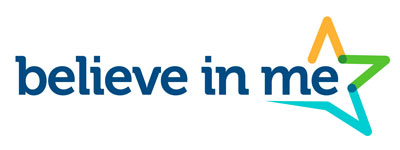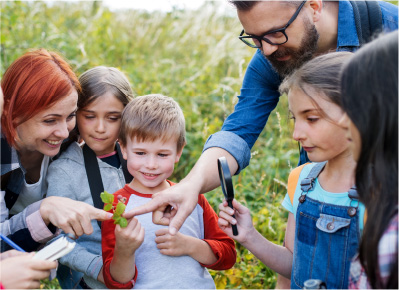Collaboration: The Secret Sauce in Supporting Marginalized Youth
Publish Date: August 8, 2025, 0:00
In a world where the challenges facing marginalized youth seem insurmountable, one thing remains certain: collaboration is key. You might ask, “What exactly is collaboration for youth support?” or “Why are cross-sector partnerships so vital?” Well, buckle up, because this post dives into the nitty-gritty of why nonprofit collaboration isn’t just a nice-to-have—it’s essential.
Believe in Me, an organization with a clear vision for youth empowerment, has long recognized that the best solutions are rooted in collective effort. By forging partnerships across nonprofit, educational, and community sectors, they demonstrate how collaboration for youth support transforms lives. Today, we’ll explore what makes collaboration so effective, share real-life case studies, and offer actionable insights on leveraging cross-sector partnerships for maximum impact.
Recent searches on Google reveal burning questions like: “How do cross-sector partnerships benefit marginalized youth?” and “What are the best practices for nonprofit collaboration?” Let’s answer these questions head-on.
Overview: How Collaboration Empowers Marginalized Youth
Collaboration for youth support involves pooling the resources, expertise, and networks of various stakeholders—nonprofits, community organizations, local businesses, and even government agencies—to tackle the complex challenges faced by marginalized youth. This multi-faceted approach sharpens the focus on innovation, sustainability, and community engagement.
For example, cross-sector partnerships enable organizations to break down silos and leverage each other’s strengths. Rather than reinventing the wheel, nonprofits can join forces to create comprehensive programs that address academic challenges, mental health issues, and social isolation among marginalized youth. As noted by the Stanford Social Innovation Review, successful collaborations foster creativity and lead to lasting change (Stanford Social Innovation Review, 2024). Similarly, Philanthropy News Digest highlights how pooling resources can significantly amplify impact (Philanthropy News Digest, 2023).
Believe in Me stands as a firm believer in the power of collaboration. Through initiatives that bring diverse community agents together, the organization has created spaces where marginalized youth feel seen, heard, and empowered to overcome adversity.
Frequently Asked Questions About Collaborative Youth Support
- What is collaboration for youth support?
It’s a comprehensive approach that involves different sectors working together to deliver holistic support for marginalized youth. - How do cross-sector partnerships benefit marginalized youth?
These partnerships blend diverse resources and expertise, creating innovative solutions and increased opportunities for youth empowerment. - Why is nonprofit collaboration essential?
Nonprofit collaboration pools strengths and minimizes resource wastage, ensuring a more comprehensive and sustainable support system. - How do community organizations build successful partnerships?
By setting clear goals, maintaining open communication, and leveraging mutual strengths, organizations build relationships that drive impactful change.
Case Studies of Successful Youth Collaboration Programs
Nothing speaks louder than real-world examples. Let’s examine two standout case studies that demonstrate why collaboration is the key to unlocking potential in marginalized youth.
Case Study 1: The Youth Empowerment Consortium
In 2024, Believe in Me joined forces with several local nonprofits, educational institutions, and community centers to create the Youth Empowerment Consortium. This initiative was designed specifically to address gaps in mental health, academic mentoring, and extracurricular engagement for marginalized youth.
One participant, 15-year-old Jasmine, found a lifeline in the program. Facing significant obstacles at home and in school, Jasmine’s life was transformed through intensive mentoring, creative arts workshops, and mental health support. Not only did she gain academic confidence, but she also emerged as a vocal advocate for other struggling youth. This success story underscores how cross-sector partnerships can build a safety net that supports diverse needs.
The Youth Empowerment Consortium is a prime example of how nonprofit collaboration creates ripples of change—providing tailored support that alone no single organization could have achieved.
Case Study 2: Community Connect: Bridging Gaps Through Collaboration
Another inspiring effort is Community Connect, a partnership spearheaded by Believe in Me along with local businesses and community groups. This project focused on bridging economic and educational gaps by setting up job shadowing programs, internship opportunities, and career workshops specifically for marginalized youth.
Through strategic nonprofit collaboration, the initiative connected youth with professionals from diverse industries, giving them a window into potential career tracks and life skills that were previously out of reach. The program not only boosted self-esteem among participants but also fostered a culture of community support and solidarity.
Both case studies serve as compelling evidence that when multiple entities collaborate effectively, the impact on youth can be transformational. As noted by the SSI Review and Philanthropy News Digest, success in such ventures is driven by clear communication, shared objectives, and a mutual commitment to making a difference.
The Role of Cross-Sector Collaboration in Building a Strong Community
Collaboration for youth support doesn’t just benefit individual participants—it revitalizes entire communities. When organizations come together, they create a force multiplier that addresses systemic issues at their roots. For marginalized youth, this means access to combined educational resources, mental health care, and community mentoring programs.
One key aspect of nonprofit collaboration is its ability to break the cycle of isolation. By connecting youth with inspiring role models and creating platforms for self-expression, these partnerships foster a sense of belonging. The collective initiative of local artists, educators, and donors helps to build a resilient community network that uplifts youth and ensures their voices are heard.
Believe in Me exemplifies this approach, continuously working with a variety of stakeholders to drive impactful community projects. Their strategic partnerships have provided marginalized youth with opportunities to engage in creative projects, leadership training, and community service—all contributing to holistic growth.
Actionable Ways to Get Involved in Collaborative Youth Support Initiatives
If you’re a nonprofit leader, community organization, or a donor looking to make a tangible impact, here are several ways you can help foster collaboration for youth support:
- Initiate or Join Cross-Sector Partnerships: Reach out to local nonprofits, businesses, and civic groups to create joint programs targeting youth development.
- Host Collaborative Workshops: Organize events where stakeholders can share ideas, resources, and create integrated support systems for youth.
- Offer Mentorship and Resources: Whether it’s financial backing, volunteer hours, or professional expertise, every bit of resource helps build a strong network.
- Create Innovation Labs: Establish spaces where creative minds from different sectors can experiment with solutions for youth-related challenges.
- Promote Success Stories: Publicize the achievements of collaborative initiatives to inspire additional partnerships and attract further support.
By actively participating in cross-sector partnerships, you don’t just help one individual—you contribute to a movement that transforms communities and redefines what’s possible for marginalized youth.
Conclusion: Embrace Collaboration to Empower Our Future
In a rapidly evolving world, collaboration for youth support has emerged as the linchpin in addressing the complex challenges faced by marginalized youth. By uniting nonprofit organizations, community groups, and donors, we create programs that are far more impactful than isolated efforts can ever achieve.
Through case studies like the Youth Empowerment Consortium and Community Connect, it’s clear that cross-sector partnerships serve as catalysts for transformative change. Believe in Me’s initiatives underscore the potent role of nonprofit collaboration, proving that when we pool our resources and talents, we build more resilient, vibrant communities.
Now is the time to act. Consider how your organization, expertise, or donation can become part of a larger network dedicated to uplifting marginalized youth. Embrace cross-sector partnerships and help us create a future where every young person has the support and opportunity they deserve.
Citations: Stanford Social Innovation Review, 2024; Philanthropy News Digest, 2023.
Get to know more about Believe in Me and Help a Kid Today
References
Stanford Social Innovation Review, 2024; Philanthropy News Digest, 2023






